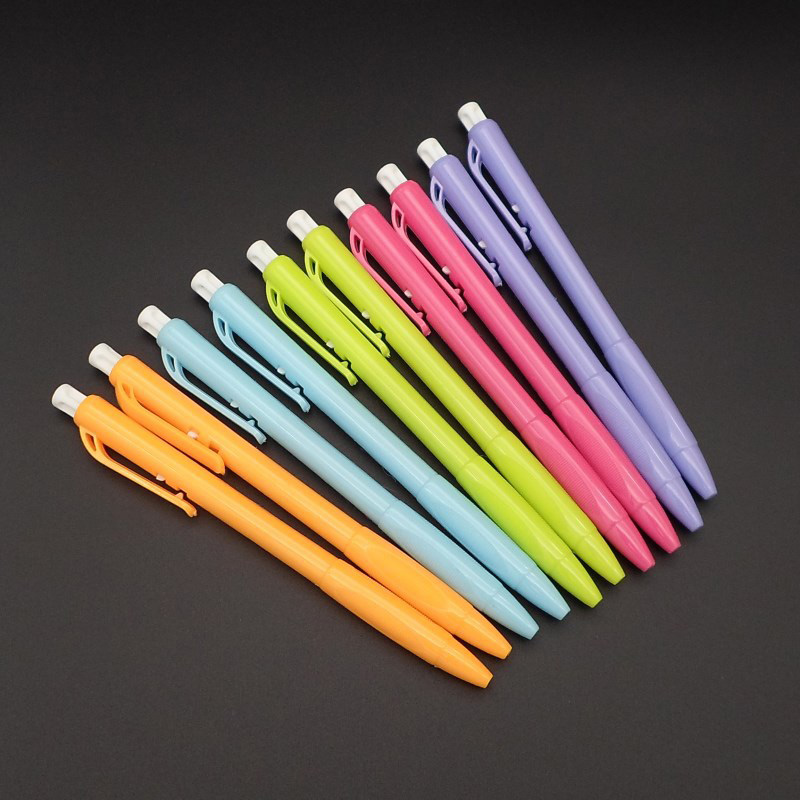In a world increasingly reliant on digital communication, the ballpoint pen remains an indispensable tool for millions worldwide. Celebrated for its durability, reliability, and ease of use, the ballpoint pen continues to dominate the writing instrument market, serving a vast range of users—from students and professionals to artists and casual note-takers. The ongoing innovation in ballpoint pen technology and design ensures that this classic tool remains relevant, practical, and highly valued in everyday life.
Why Ballpoint Pens Endure
The key to the ballpoint pen’s lasting popularity lies in its simple yet effective design. At the heart of the pen is a small rotating metal ball at the tip, which dispenses ink smoothly and consistently as it rolls across the paper. This mechanism reduces smudging and allows for quick-drying ink, making ballpoint pens exceptionally convenient for fast, clean writing.
One of the advantages of ballpoint pens is their durability. The ink used is oil-based and thicker than in many other pens, which means it is less prone to leaking or drying out quickly. Many ballpoint pens feature large ink reservoirs that allow for thousands of pages to be written before replacement or refill is necessary. This longevity appeals to heavy users such as students, office workers, and field professionals.
Innovations Fueling Continued Success
Despite being one of the oldest pen designs, ballpoint pens have not remained static. Manufacturers worldwide are continuously refining the ink formulations, tip designs, and pen ergonomics to meet evolving user needs.
Advanced Ink Formulations: Recent developments in ink chemistry have improved flow consistency and color vibrancy while maintaining the quick-drying, smudge-resistant properties that users expect. Additionally, water-resistant and archival-quality inks have been introduced, catering to legal and artistic applications where durability is crucial.
Ergonomic Design: Modern ballpoint pens often feature soft grips, contoured barrels, and balanced weight distribution to reduce hand fatigue during prolonged writing sessions. These ergonomic improvements have expanded the pen’s appeal to professionals and students who write extensively.
Refillable Systems: Sustainability has become a significant trend, prompting many brands to offer refillable ballpoint pens. Refillable designs reduce plastic waste and allow users to extend the life of their pens, aligning with growing environmental awareness.

Aesthetic Customization: From sleek metallic finishes to vibrant, patterned barrels, ballpoint pens now come in an array of styles that appeal to personal taste and professional identity. Personalized and branded pens are common as corporate gifts and promotional items, reinforcing the pen’s role as both a functional and symbolic object.
Market Trends and Consumer Behavior
According to the 2025 Global Writing Instruments Market Report by Stationery Insights, the ballpoint pen segment remains the largest in the writing instruments market, accounting for approximately 55% of total sales worldwide. The report forecasts a steady growth rate of 3.5% annually through 2030, driven primarily by demand in emerging markets and educational sectors.
In developing countries, expanding access to education and office infrastructure continues to fuel demand for affordable, durable writing tools like ballpoint pens. In mature markets, consumers show increasing interest in premium and eco-friendly options, reflecting broader lifestyle trends.
Young consumers are particularly drawn to pens that offer a balance of functionality and style. Social media trends around journaling and analog creativity have also boosted interest in quality ballpoint pens that support expressive, neat handwriting.
Challenges and Industry Adaptation
While the ballpoint pen enjoys enduring popularity, it faces challenges from digital devices and cheaper alternatives. Smartphones, tablets, and digital styluses are increasingly used for note-taking and document signing, particularly in professional environments.
Additionally, low-cost imports from certain regions create pricing pressures for premium brands. To maintain market share, manufacturers emphasize innovation, quality, and brand differentiation.
Educational institutions and corporations also adopt hybrid approaches—integrating traditional writing with digital workflows. Some ballpoint pens now incorporate stylus tips for touchscreen use, appealing to users who navigate between paper and digital formats.
Sustainability: The Future Focus
Environmental concerns are reshaping the ballpoint pen industry. Many companies are investing in sustainable materials such as biodegradable plastics and recycled metals for pen bodies. The refillable ballpoint pen model is gaining traction as consumers seek to reduce single-use plastic waste.